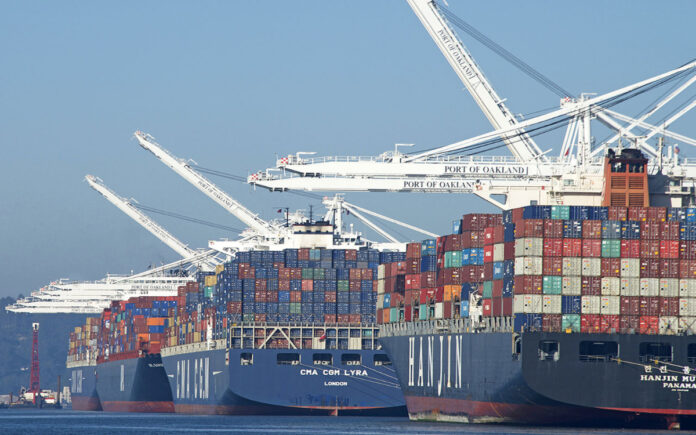London/Berlin/Washington: The global container shipping sector has expressed cautious optimism following a temporary easing of tariffs between the United States and China. The development is expected to help revive trade flows and potentially boost bookings from China to the U.S., which had sharply declined amid the protracted tariff standoff.
As part of the 90-day agreement announced Monday, the U.S. will reduce its additional tariffs on Chinese imports from 145% to 30%, while China will lower its retaliatory tariffs on U.S. goods from 125% to 10%.
The intense trade dispute between the world’s two largest economies had caused a significant drop in bilateral trade volumes. Major shipping lines such as MSC and Cosco were forced to cancel sailings or reroute services, while others downsized operations by deploying smaller vessels.
Though the tariff cuts bring relief, the long-term impact on volumes remains uncertain. Some factories in China have yet to resume full operations, and supply chain unpredictability continues to cloud the outlook.
“It’s welcome news that these guys are talking and that the numbers have been pulled down from those sky-high levels,” said Gene Seroka, executive director of the Port of Los Angeles, the busiest U.S. seaport and the leading gateway for ocean imports from China.
“There’s still much more work in front of us,” Seroka added, emphasizing that the 30% tariff level is still significantly above the pre-Trump administration baseline.
Industry analysts suggest that a rebound in demand could cause spot rates for container vessel space to rise. Critical goods, such as medical equipment and supplies, may be expedited into the U.S. if inventories are tight.
However, Seroka cautioned that many retailers may adopt a wait-and-see approach, especially with 30% tariffs still threatening to raise consumer prices. Major U.S. retailers like Walmart, Target, and Home Depot collectively account for nearly half of global container shipping volume.
The decision-making window is tight. U.S. retailers typically place year-end holiday orders in May, with shipments scheduled to arrive between August and October.
“I don’t know that many retailers are going to say, ‘Hey, for our biggest time of the year, 30% is OK’,” Seroka said.
Mike Abt, co-president of Abt Electronics in Chicago, said his company is cautiously managing inventory that was stockpiled ahead of previous tariff implementations.
“Everyone wants consistency and that’s been the hard part of this whole thing. It’s like a game of Risk, you really don’t know what the right answer is,” Abt said, referencing the uncertainty surrounding U.S.-China trade policy.
Last month, Drewry Shipping Consultants predicted that global container port volume in 2025 could shrink by 1% due to trade policies under former President Donald Trump, a reversal from its earlier forecast of 2.3% growth. However, Simon Heaney, Drewry’s senior container research manager, hinted at a more positive outlook following the tariff reprieve.
“Assuming no hiccups along the way (in China-U.S. trade talks), we can safely expect to raise our growth projections for the container market shortly,” Heaney stated on LinkedIn.
German carrier Hapag-Lloyd said it expects demand to rise and is reconsidering plans to switch to smaller ships on China-U.S. routes.
“Originally, we had planned to use smaller ships for transports from China to (the U.S. coasts) but may reverse that if demand is strong,” the company said in a statement.
Also Read | Tariff War on Hold: U.S. and China Reach Tentative Trade Breakthrough
Meanwhile, Danish shipping giant Maersk said it had recently reallocated 20% of its China-U.S. capacity to other routes but could reverse that shift quickly if demand surges.
“Maersk could switch that back as quickly if customers ask for it,” CEO Vincent Clerc noted.
Investor sentiment reflected renewed optimism. The Dow Jones Transportation Average jumped 7% on Monday, while Hapag-Lloyd and Maersk saw stock gains of approximately 13% and 11%, respectively. Cosco shares rose by 2%.
Also Read | White South Africans Arrive in U.S. as Trump Claims Racial Persecution
Judah Levine, head of research at Freightos, said the current 30% tariff level may still prompt importers to front-load shipments, similar to patterns observed earlier in the year.
Peter Sand, chief analyst at Xeneta, added that with a 22-day average transit time on the Transpacific route, the 90-day tariff pause will likely drive a short-term surge in shipping volumes.
“This will put upward pressure on freight rates,” Sand said.



